A beloved dim sum staple, har gow are crystal shrimp dumplings that are seemingly simple yet packed with flavor. Pleated to perfection and steamed in bamboo baskets, these succulent dim sum favorites are so delicious, you won't even need dipping sauce (though you can certainly dip them if you'd like).
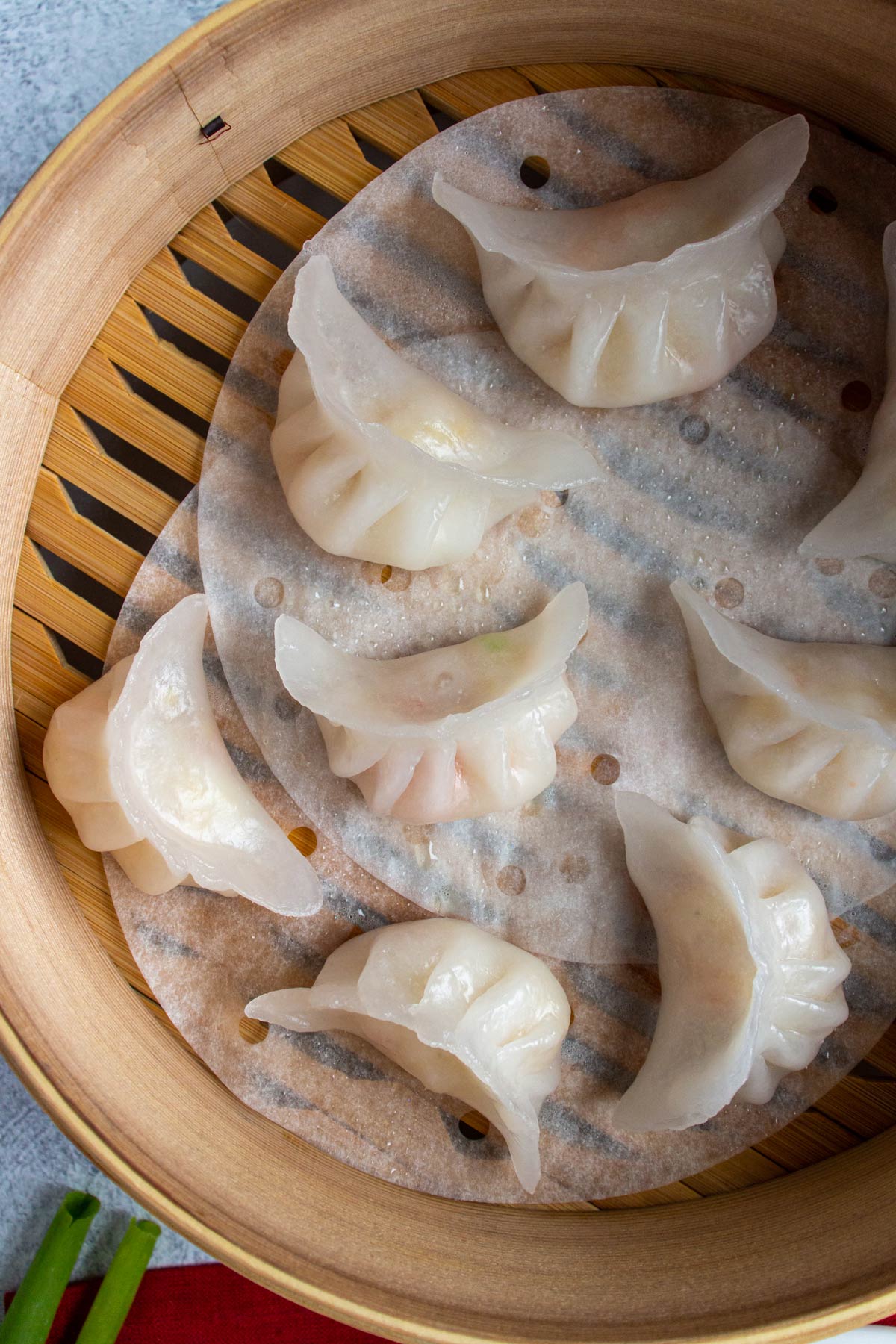
(This recipe was originally published in August 2012, but was updated with new photos and content in 2021).
If you've ever gone out for dim sum, then you've undoubtedly seen plump, glistening har gow (蝦餃), or crystal shrimp dumplings, carted around on the trolleys. Classic har gow are the dumplings that many dim sum masters are judged by. They are the quintessential Chinese dumpling, if there ever was one.
Wheat starch dough (which also includes some tapioca starch for suppleness) is stark white in color. You will recognize the white translucent wrapper from many of the dumplings on dim sum carts. Some even refer to this style of dumplings as crystal dumplings because the wrappers glisten and are fairly translucent like crystals.
Har gow dumplings are basically white on white (or white on pink if you're being technical as shrimp turns pink when it cooks). The snowy white wrappers encase an entirely pale colored filling. Pork fat is a traditional addition to the filling, adding a bit of richness, but it's definitely optional. I generally choose to keep my filling strictly pescatarian and leave it out.
Finely chopped bamboo shoots provide a bit of texture while minced ginger, the white parts of scallions, Shaoxing rice wine, and sesame oil add a significant amount of flavor to an otherwise simple filling.
Ingredient notes
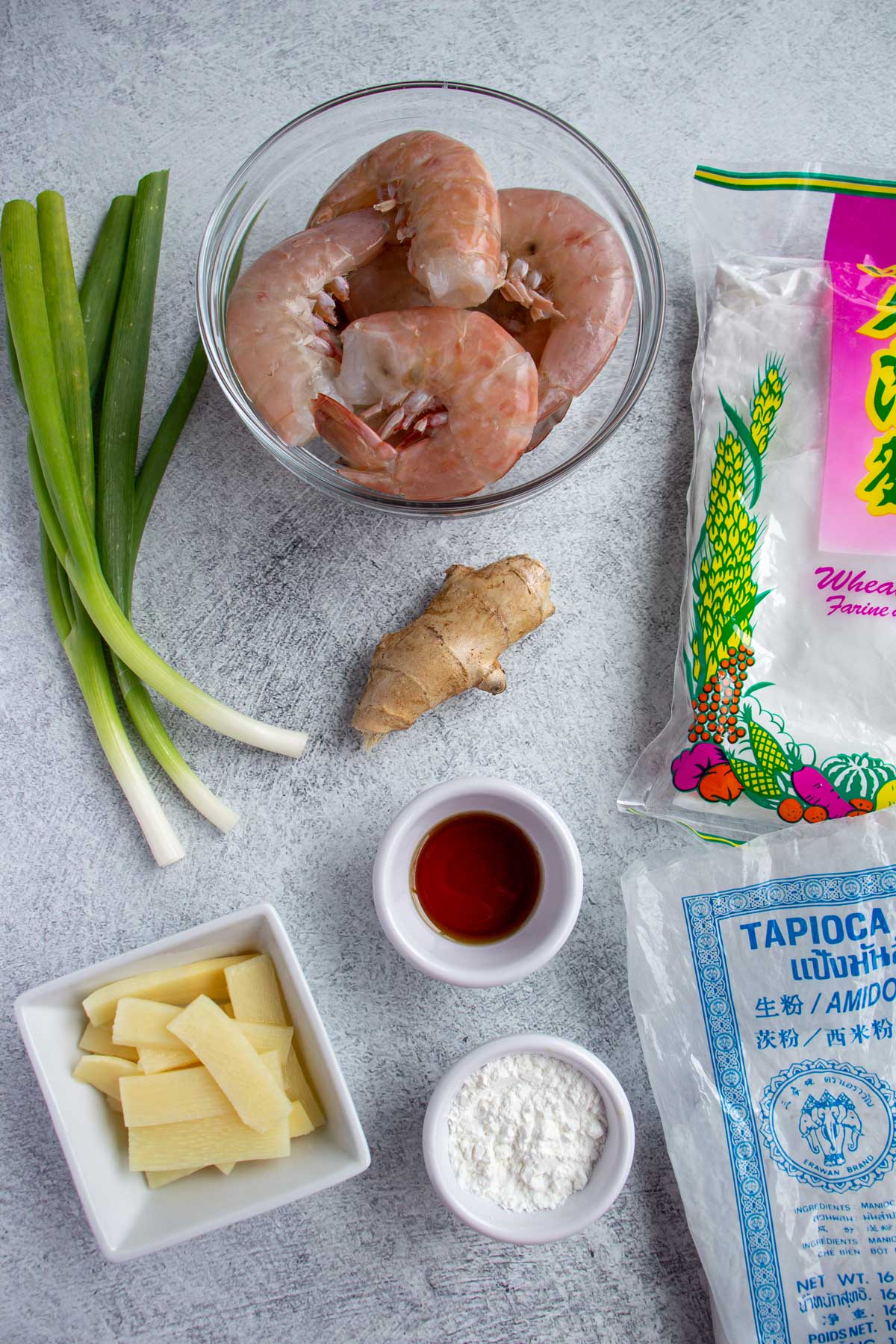
- Wheat Starch: This particular dough is made predominantly with wheat starch. Wheat starch is the byproduct of making wheat gluten (seitan), however it’s difficult to completely separate the gluten protein in a grain of wheat. Therefore to be safe I would not recommend wheat starch for someone who is Celiac or requires a gluten-free diet because it may contain trace amounts of gluten. Find wheat starch in Asian markets (cheaper) or online (pricier).
- Tapioca Starch: Also called tapioca flour, this is the starch of the cassava root (yuca or manioc). Adding tapioca starch to the dumpling dough provides additional translucency and elasticity. It’s also a great gluten-free thickener. Find it in Asian, Latin, African, Caribbean, or specialty markets (cheaper), and online (pricier).
- Fresh Shrimp: The size of the fresh shrimp doesn’t matter too much since you will be cutting it into small pieces. I recommend purchasing the best shrimp you can afford, and personally prefer wild Gulf shrimp rather than farm raised from ambiguous sources. Stock up when they’re on sale, as shrimp freezes very well.
- Sesame Oil: Sesame oil is a workhorse in Chinese cuisine. A small amount provides so much flavor to your cooking! Plain sesame oil is lighter in color than toasted sesame oil, which is dark brown, and much more flavorful. The packaging may not say "toasted" but you can tell the difference by the color. Plan to use toasted sesame oil for this har gow recipe.
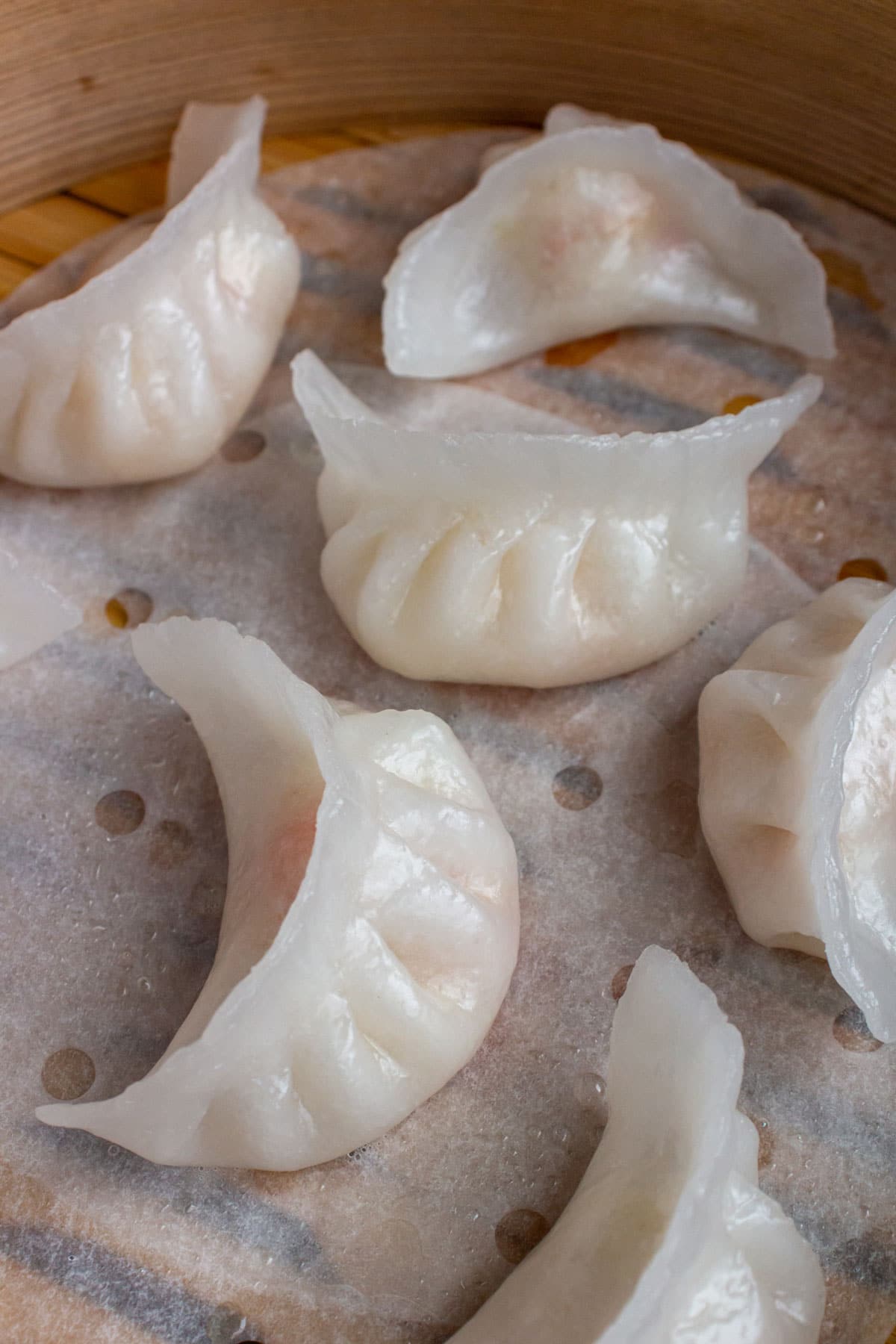
How to make it
To make the filling, add chopped shrimp into a bowl and add pork fat (if using), bamboo shoots or water chestnuts, scallion, and ginger (PHOTO 1). Stir to combine (PHOTO 2).
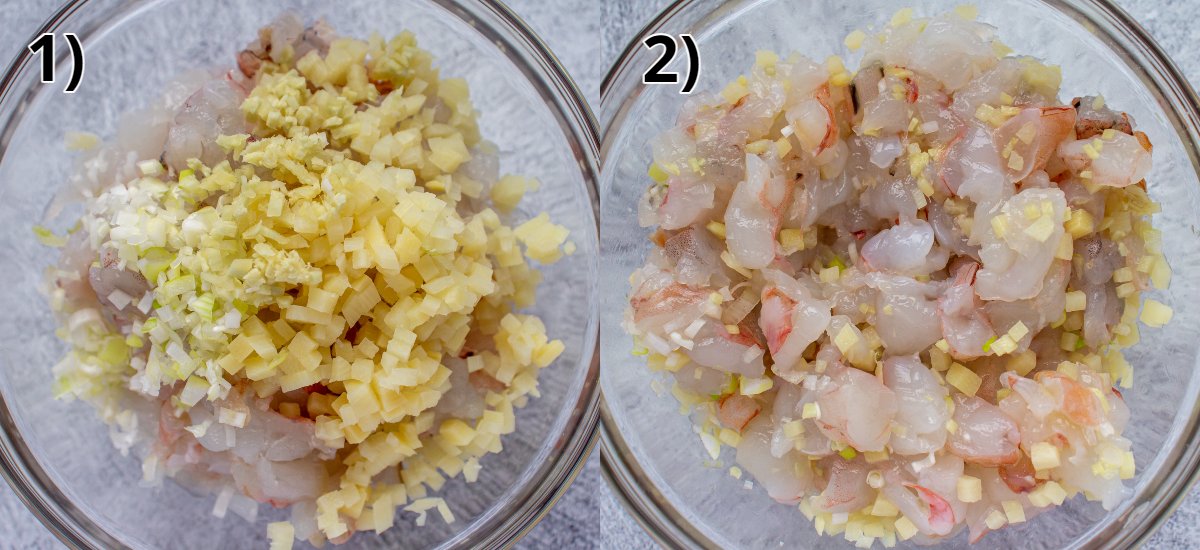
In a small bowl, combine salt, cornstarch, sugar, pepper, rice wine, and sesame oil, stirring to dissolve the cornstarch. Pour the seasonings over the shrimp mixture, and stir to coat evenly (PHOTOS 3-4).
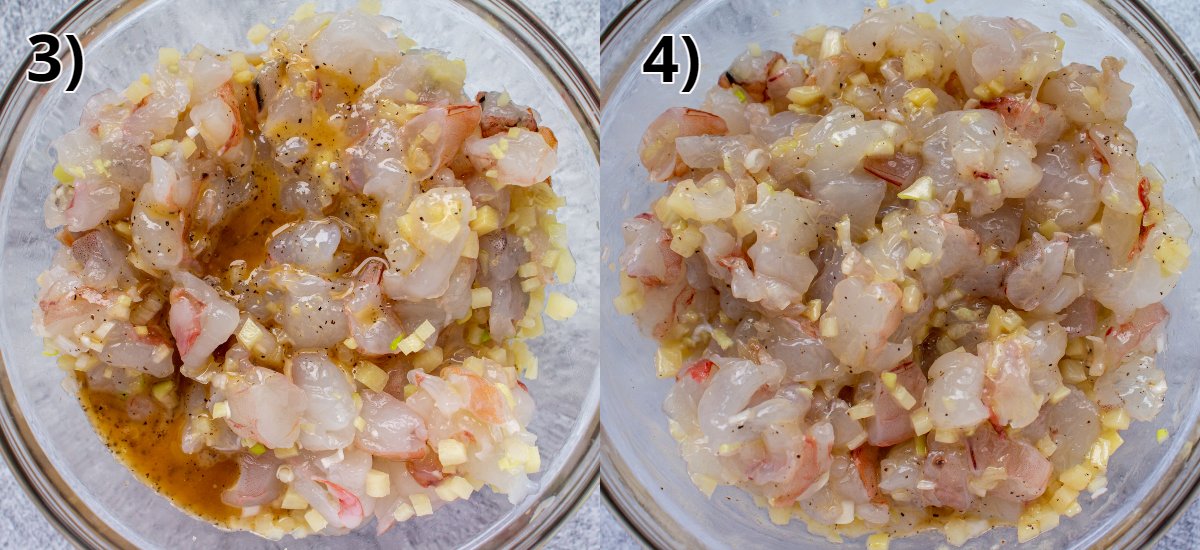
While the filling rests, make the wheat starch dough. In a bowl combine wheat starch, tapioca starch, and salt. Make a well in the center and pour in just-boiled water. Use a sturdy metal spoon to stir the ingredients together. The dough will look translucent at first and then become mottled, whitish, and lumpy.
Once the water has been roughly incorporated, add oil (PHOTO 5). Stir at first with the spoon, and later with your hands (beware the mixture will be relatively hot) to work in the oil. Knead the dough until snowy white, smooth and resembling Play-Doh in texture (PHOTO 6).
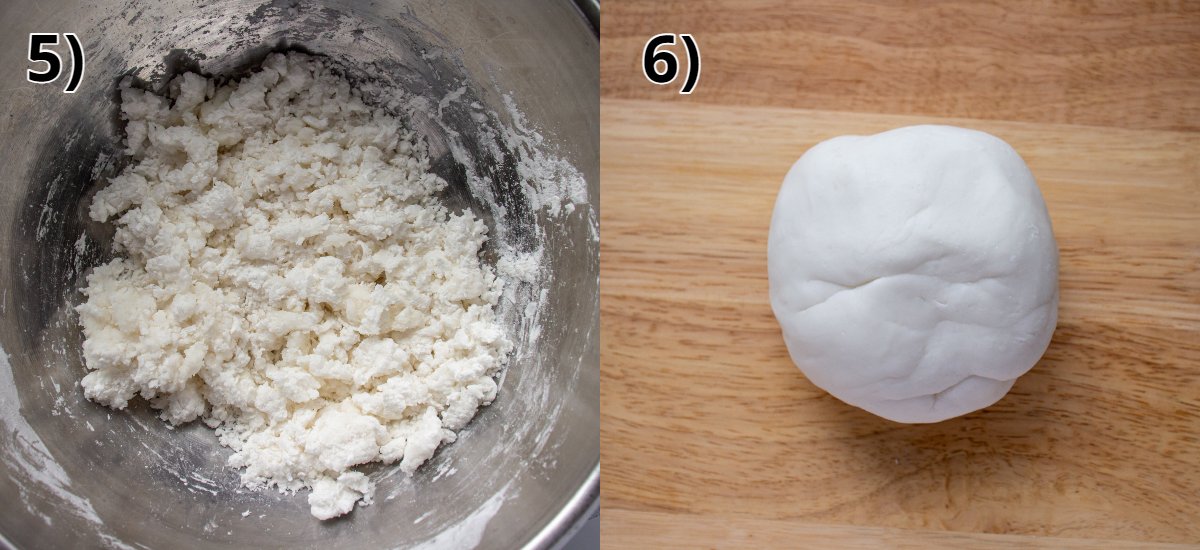
Before assembling the dumplings, line steamer trays and baking sheets with parchment paper (perforated preferred for steamer trays), then lightly oil the paper.
Cut the dough into 4 equal pieces and put them into a zip-top plastic bag and seal well (PHOTO 7). Set aside for 5 minutes to rest before using. Working with 1 piece of dough at a time, roll it on an unfloured work surface into an 8-inch long log. Cut the log into 8 equal pieces (PHOTO 8).
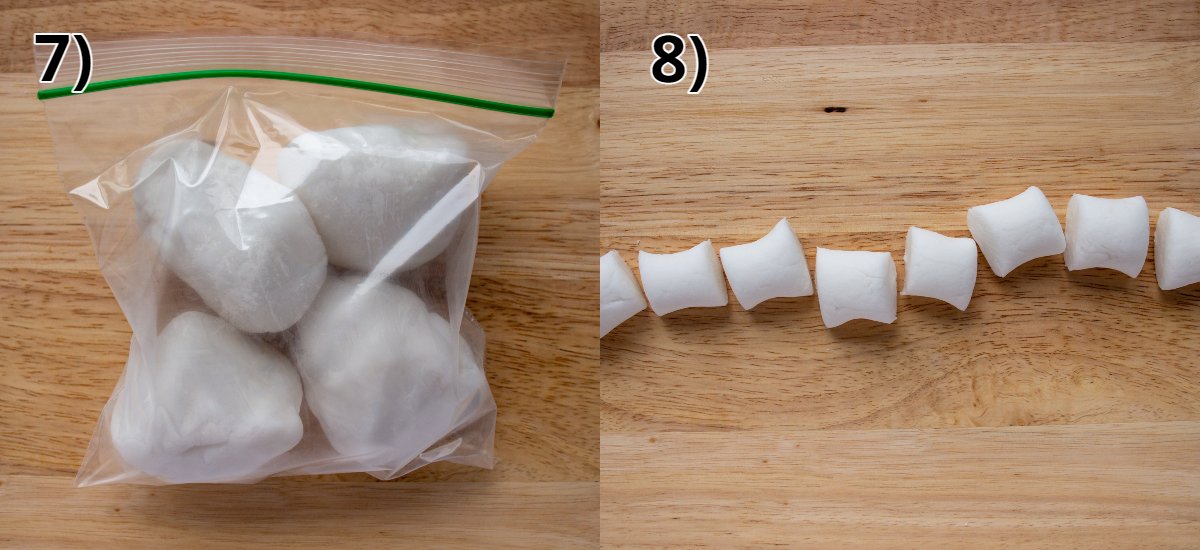
Cut the sides of a zip-top bag, leaving the far side connected so it opens like a book. Press each dough disk into a ¼-inch-thick disk (PHOTO 9). Place a disk inside the cut zip-top bag (inside the "book"). Apply moderate pressure with a tortilla press, the flat side of a cleaver, or the bottom of skillet (PHOTO 10).
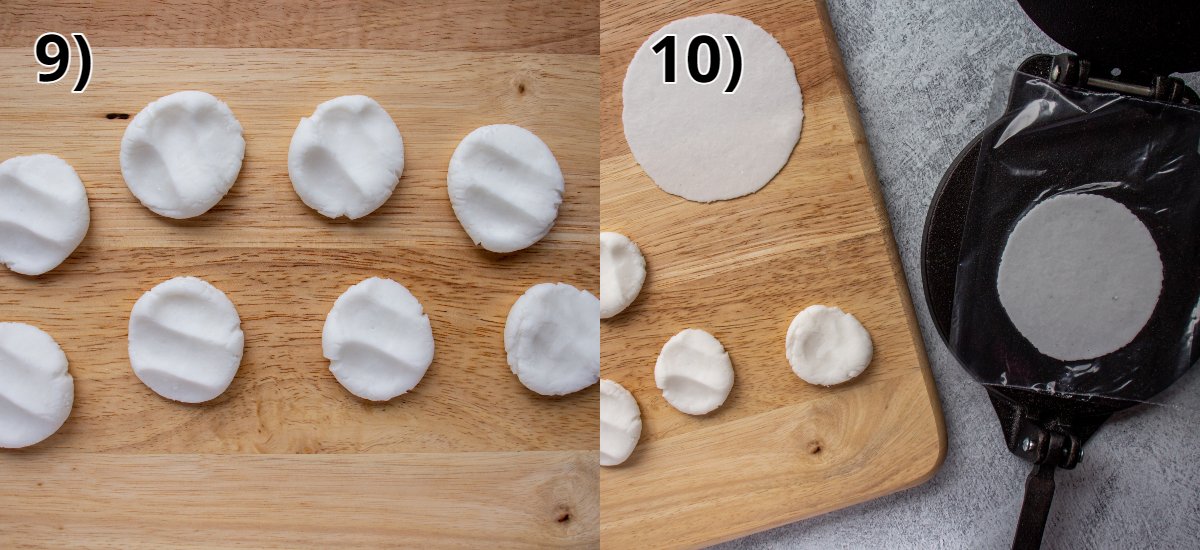
The desired size is about 3 to 3 ¼ inches in diameter. Unpeel the plastic and set the slightly shiny wrapper aside. Repeat with the remaining dough disks. (To prevent the dough from drying, assemble a batch of dumplings before forming more wrappers from another portion of dough.)
To assemble a har gow dumpling, hold a wrapper in a slightly cupped hand. Scoop about 2 teaspoons of filling and place it in the center of the wrapper. You may also place the filling on wrappers arranged on the work surface and assemble them that way if you feel more comfortable.
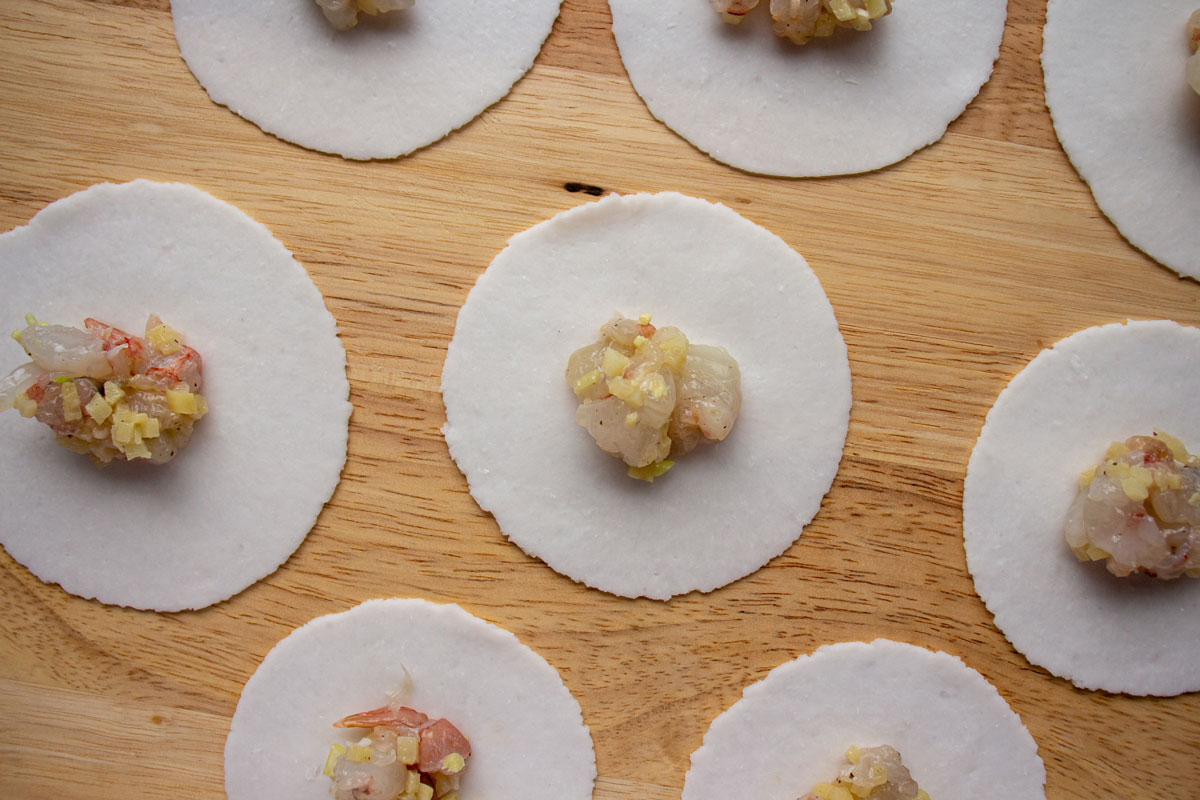
Make the first pinch between index finger and thumb at one end, then fold over the front edge to form the first pleat and press it against the back edge. Continue pleating the dough in this fashion until making the final pleat at the opposite end. Then settle the har gow on a work surface and press the edges to seal well.
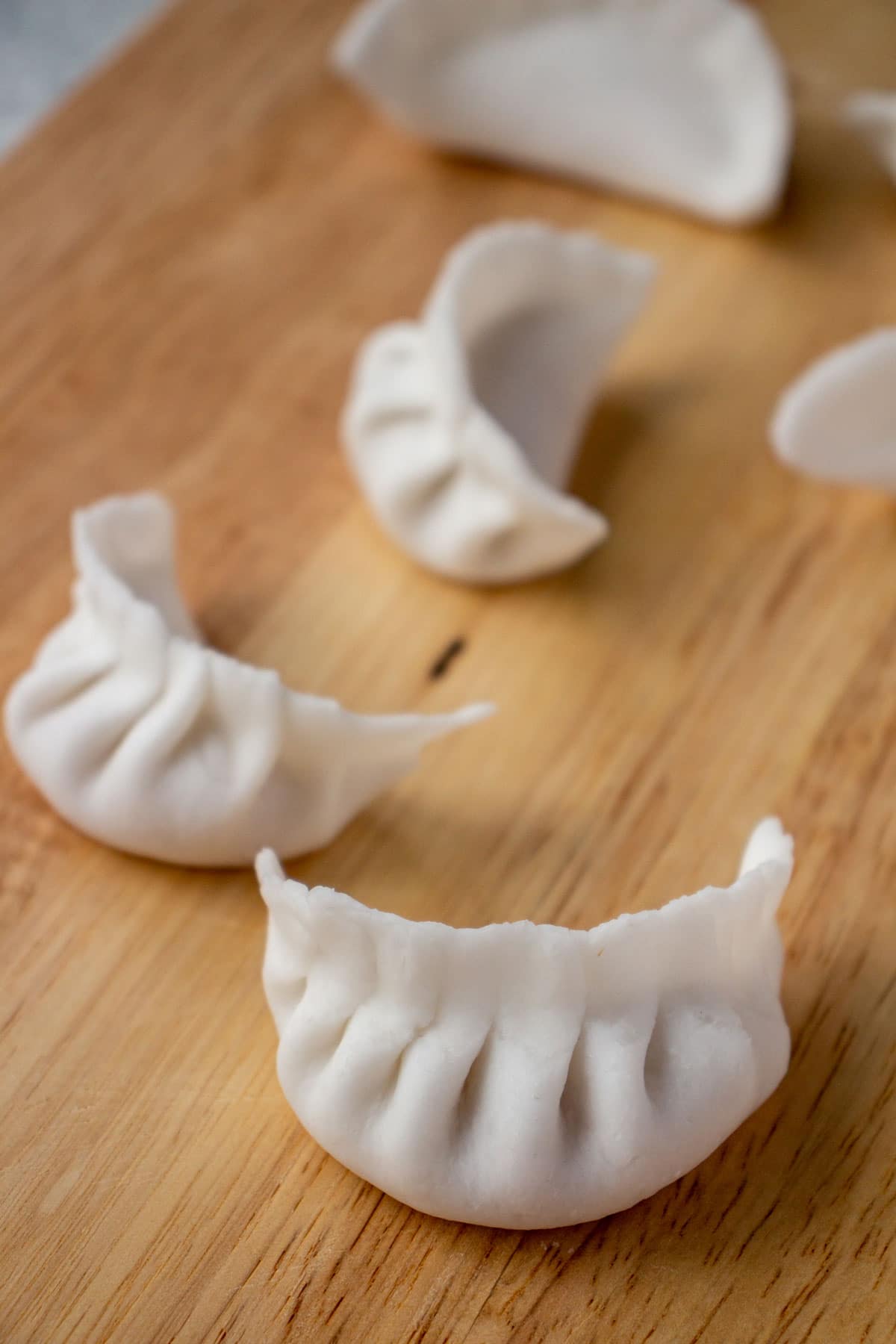
If the skin breaks, dab a tiny bit of oil on the area and try smoothing out and patching up the wrapper.
Set the finished dumpling in a prepared steamer tray. Assemble more crystal shrimp dumplings from the remaining wrappers before working on the next batch of dough. Space them about ½ inch apart. Once assembled, har gow should be cooked as soon as possible, because they cannot be refrigerated uncooked.
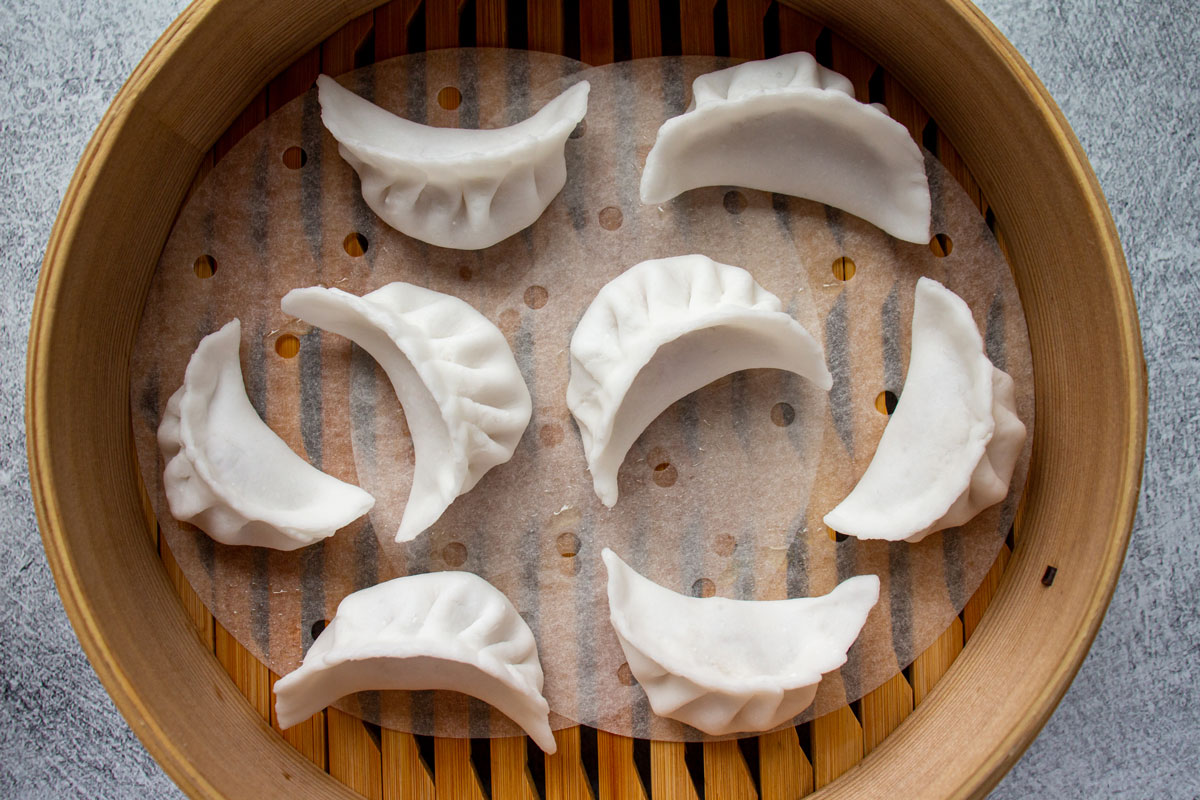
Steam over boiling water for about 6 or 7 minutes, or until the har gow have puffed slightly and are glossy and translucent (they will become more translucent as they begin to cool as well).
Remove each tray and place it atop a serving plate. Serve crystal shrimp dumplings as is or with soy sauce for dipping.
Please scroll to the bottom of the post for the full recipe (in a printable recipe card) including ingredient amounts and detailed instructions.
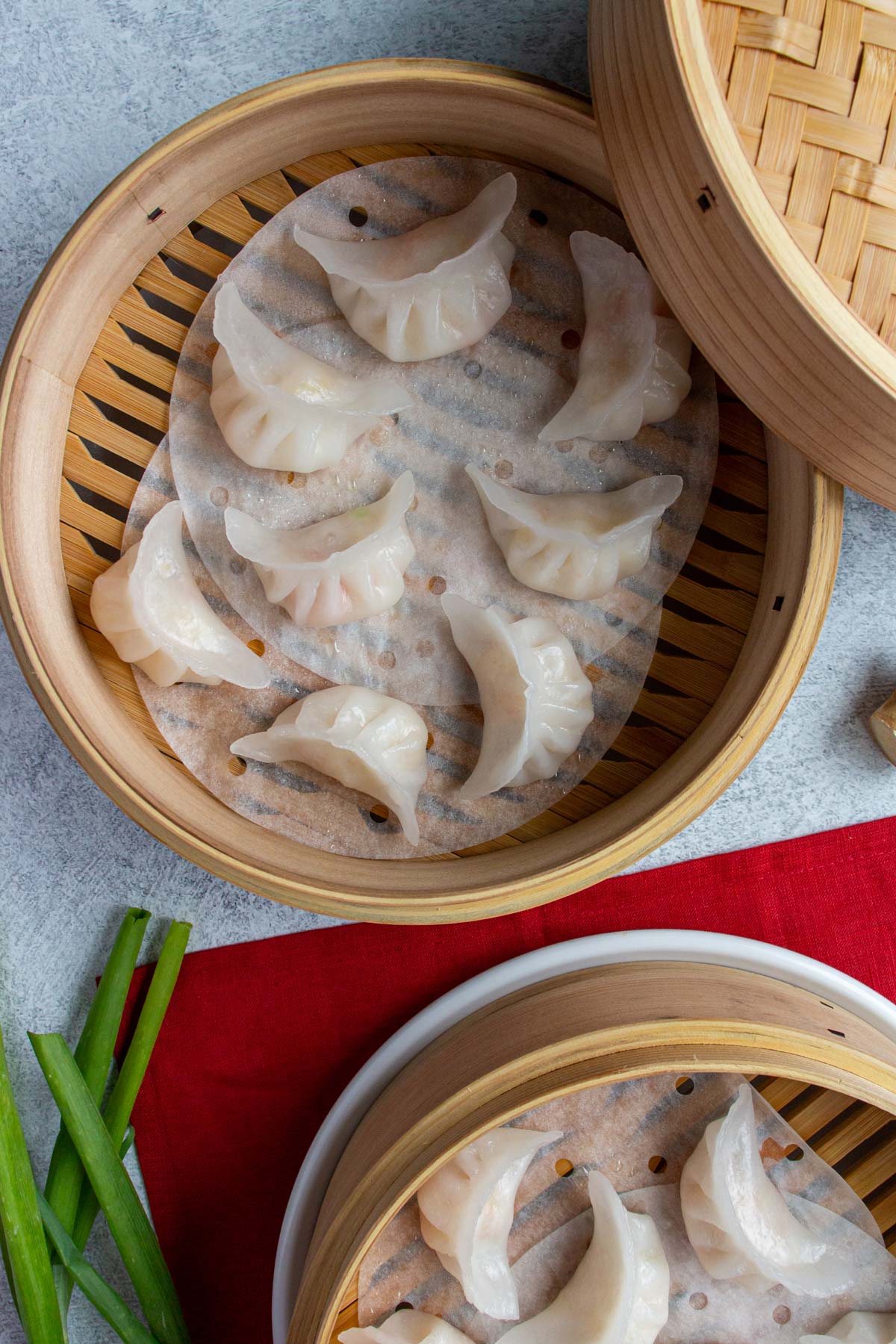
Expert tips and FAQ
These har gow MUST be cooked before refrigerating or freezing. Plan on steaming all the dumplings you make even if you aren't going to eat them right away. You cannot refrigerate or freeze them in their raw state.
To freeze steamed har gow, arrange in a single layer on a tray and freeze until solid. Then transfer frozen dumplings to a zip-top freezer bag and freeze for up to 1 month.
Thaw frozen crystal shrimp dumplings in the refrigerator, making sure you cover them so they don’t dry out. Then re-steam them for 3 to 5 minutes in a steamer basket to refresh them to their earlier state.
Freeze bags of wheat starch and tapioca starch for freshness and longevity.
Wheat starch dough is actually easier to work with and more forgiving than flour-based dumpling wrappers. Because the wrappers are made by pressing the dough flat rather than rolling them out, a lot less elbow grease is required to form a batch of wrappers. If a dumpling skin breaks, dab a tiny bit of oil on the area and try smoothing out and patching up the wrapper.
Because these traditional dumplings feature wheat starch wrappers instead of flour wrappers, I would not recommend swapping out the wrappers for store-bought if you want to obtain the authentic texture and look of these translucent dumplings. With that said the filling would still be delicious in any other type of wrapper, however they would not be considered authentic shrimp har gow.
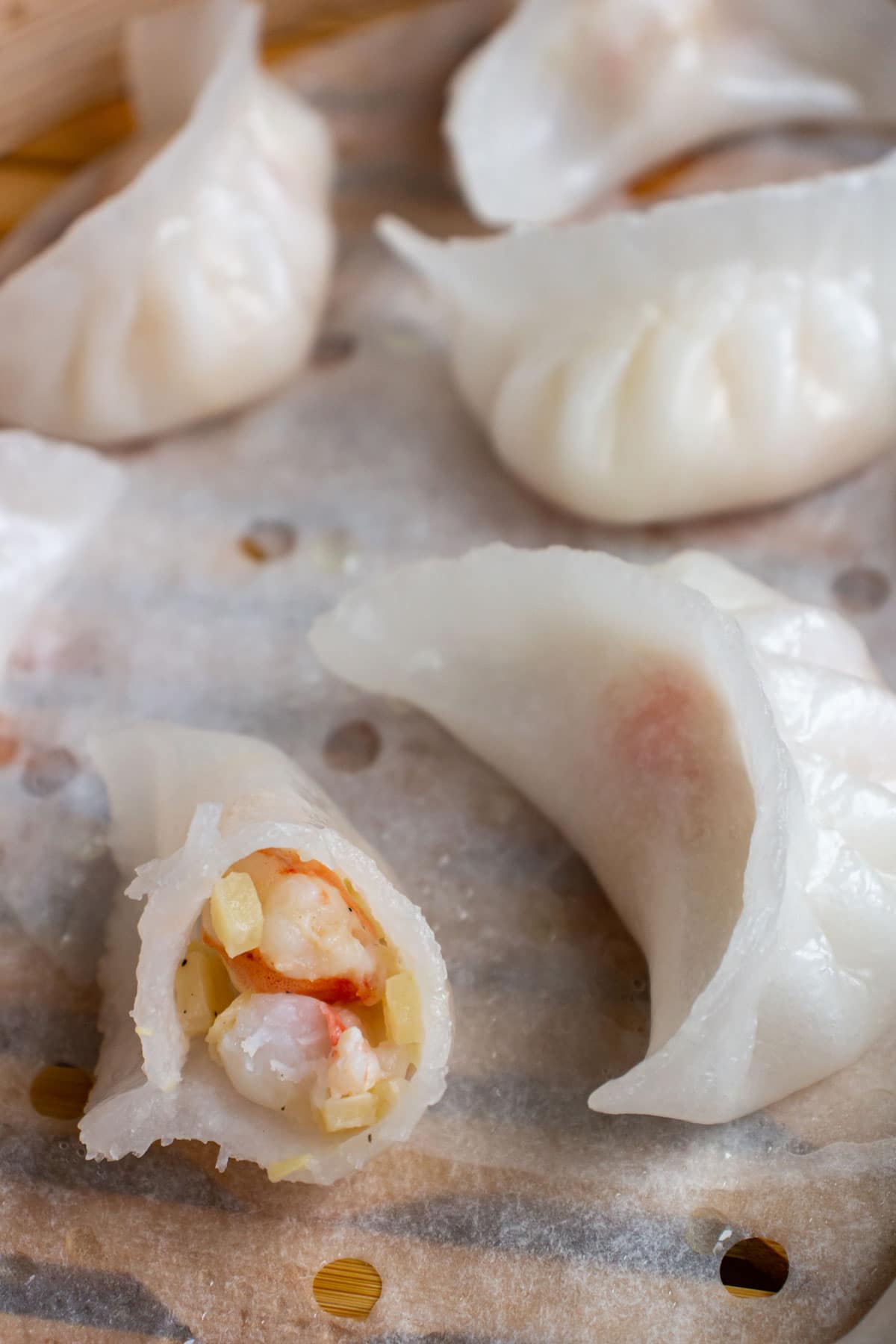
Other recipes you may like
- Chinese Chive Dumplings (Jiu Cai Jiao)
- Shrimp Toast
- Pork and Shrimp Dumplings
- Fish Dumplings
- Vegetable Dumplings (Vegetable Potstickers)
- Three Mushroom Dumplings
- Steamed Pearl Balls
- Char Siu Sou (Chinese Roast Pork Pastry Puffs)
Tried this recipe? Please leave a star ⭐️⭐️⭐️⭐️⭐️ rating in the recipe card below and/or a review in the comments section further down the page. You can also follow me on social media on Facebook, Instagram, and Pinterest!
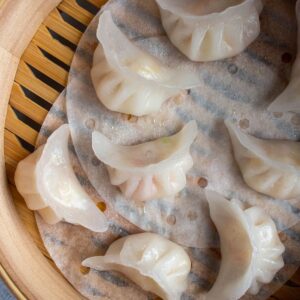
Har Gow (Crystal Shrimp Dumplings)
Ingredients
Filling:
- 10 ounces fresh shrimp, peeled and deveined (8 ½ to 9 ounces net weight)
- ¾ teaspoon kosher salt
- 1 ½ tablespoons minced pork fat or fatty bacon (optional)
- 3 tablespoons finely chopped bamboo shoots or water chestnuts
- 2 teaspoons minced scallion, white part only
- 2 teaspoons minced fresh ginger
- 1 ½ teaspoons cornstarch
- ¾ teaspoon granulated sugar
- ⅛ teaspoon finely ground white or black pepper
- 1 ½ teaspoons Shaoxing rice wine or dry sherry
- 1 teaspoon toasted sesame oil
Wheat Starch Dough:
- 4 ½ ounces (1 cup) wheat starch
- 2 ¼ ounces (½ cup) tapioca starch
- ⅛ teaspoon kosher salt
- About 1 cup just-boiled water (let boiled water cool for 30 seconds before measuring and using)
- 4 teaspoons canola oil
Instructions
Filling:
- Toss the shrimp with ¼ teaspoon of the salt, put them in a strainer, and rinse under cold water. Transfer to a paper towel and blot to dry, then chop the shrimp into ¼-inch pieces.
- Put the chopped shrimp into a bowl and add the pork fat (if using), bamboo shoots or water chestnuts, scallion, and ginger. Stir to combine.
- In a small bowl, combine the remaining ½ teaspoon salt, cornstarch, sugar, pepper, rice wine, and sesame oil, stirring to dissolve the cornstarch. Pour the seasonings over the shrimp mixture, and stir to coat evenly. Cover with plastic wrap and set aside for 30 minutes at room temperature (while you prepare the dough) or refrigerate for up to 4 hours to marinate. Makes about 1 ⅓ cups shrimp filling.
Dough:
- In a bowl combine the wheat starch, tapioca starch, and salt. Make a well in the center and pour in about 14 tablespoons of the water (to measure easily, this is exactly halfway between ¾ cup and 1 cup in a liquid measuring cup). Use a sturdy metal spoon to stir the ingredients together. The dough will look translucent at first and then become mottled, whitish, and lumpy.
- Once the water has been roughly incorporated, add the oil. Stir at first with the spoon, and later with your hands (beware the mixture will be relatively hot) to work in the oil. If the dough looks dry, add a little more water. Aim for a medium firm texture, not a soft and mushy one. Add wheat starch by the tablespoon if you add too much water. Press the ingredients together into a rough ball that feels a bit bouncy.
- Knead the dough either in the bowl if it's large enough or on an unfloured surface for 1 to 2 minutes, until snowy white, smooth and resembling Play-Doh in texture. When you squeeze on it, it should not crack. If it cracks, very lightly oil one hand and knead it into the dough to increase the dough’s suppleness.
- Cut the dough into 4 equal pieces (weigh them with a digital scale if you have one for accuracy) and put them into a zip-top plastic bag and seal well. Set aside for 5 minutes to rest before using. This dough can be made up to 6 hours in advance and left at room temperature in the zip-top bag.
Assembly and Cooking:
- Before assembling the dumplings, line steamer trays and baking sheets with parchment paper (perforated preferred for steamer trays), then oil the paper.
- Cut the sides of a zip-top bag, leaving the far side connected so it opens like a book. Smear a little oil on the inside of the cut zip-top bag. Working with 1 piece of dough at a time, roll it on an unfloured work surface into an 8-inch long log. Cut the log into 8 equal pieces. To prevent drying and sticking, dab your finger in some neutral oil and rub a tiny bit on each of the ends of the dough pieces, pressing each into a ¼-inch-thick disk as you go.
- Place a disk inside the cut zip-top bag (inside the "book"). Apply moderate pressure with a tortilla press, the flat side of a cleaver, or the bottom of skillet. You maybe have to press more than once to arrive at the desired size (about 3 to 3 ¼ inches in diameter). Unpeel the plastic and set the slightly shiny wrapper aside. Repeat with the remaining prepped dough pieces. There should be no need to re-oil the plastic between pressings. To prevent the dough from drying, assemble a batch of dumplings before forming more wrappers from another portion of dough.
- To assemble a dumpling, hold a wrapper in a slightly cupped hand. Scoop about 2 teaspoons of filling and place it in the center of the wrapper. You may also place the filling on wrappers arranged on the work surface and assemble them that way if you feel more comfortable.
- Make the first pinch between index finger and thumb at one end, then fold over the front edge to form the first pleat and press it against the back edge. Continue pleating the dough in this fashion until making the final pleat at the opposite end. Then settle the dumpling on a work surface and press the edges to seal well. If the skin breaks, dab a tiny bit of oil on the area and try smoothing out and patching up the wrapper.
- Set the finished dumpling in a prepared steamer tray. Assemble more dumplings from the remaining wrappers before working on the next batch of dough. Space them about ½ inch apart. Place overflow dumplings on the baking sheet with a good ½ inch between each and cover with plastic wrap. Once assembled the dumplings should be cooked as soon as possible, because they cannot be refrigerated uncooked.
- Stack the steamer baskets and cover with the lid. Steam the dumplings over boiling water for about 6 or 7 minutes, or until they have puffed slightly and are glossy and translucent (they will become more translucent as they begin to cool as well). Remove each tray and place it atop a serving plate.
- Serve hot with soy sauce, if desired.
Notes
- These dumplings MUST be cooked before refrigerating or freezing. Plan on steaming all the dumplings you make even if you aren't going to eat them right away. You cannot refrigerate or freeze them in their raw state.
- To freeze steamed dumplings, arrange in a single layer on a tray and freeze until solid. Then transfer frozen dumplings to a zip-top freezer bag and freeze for up to 1 month.
- Gently thaw frozen dumplings in the refrigerator until completely thawed. Make sure you cover them so they don’t dry out. Then re-steam them for 3 to 5 minutes in a steamer basket to refresh them to their earlier state.
- Because these traditional dumplings feature wheat starch wrappers instead of flour wrappers, I would not recommend swapping out the wrappers for store-bought if you want to obtain the authentic texture and look of these translucent dumplings.
- Freeze bags of wheat starch and tapioca starch for freshness and longevity.
- Adapted from Asian Dumplings
Nutrition
*All nutritional information is based on third-party calculations and should be considered estimates. Actual nutritional content will vary with brands used, measuring methods, portion sizes and more.*

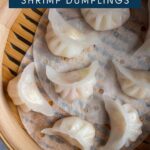


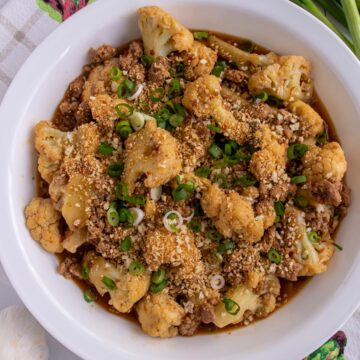
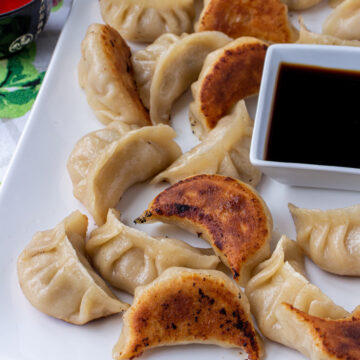
Comments
No Comments